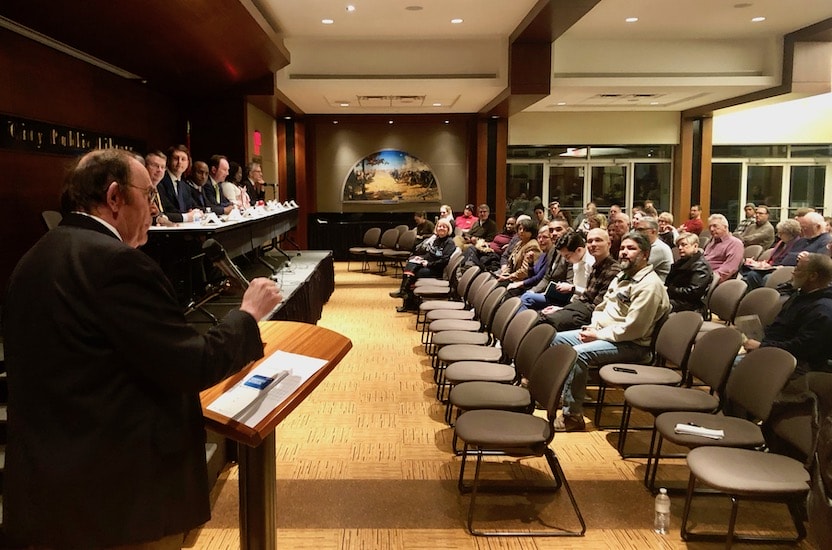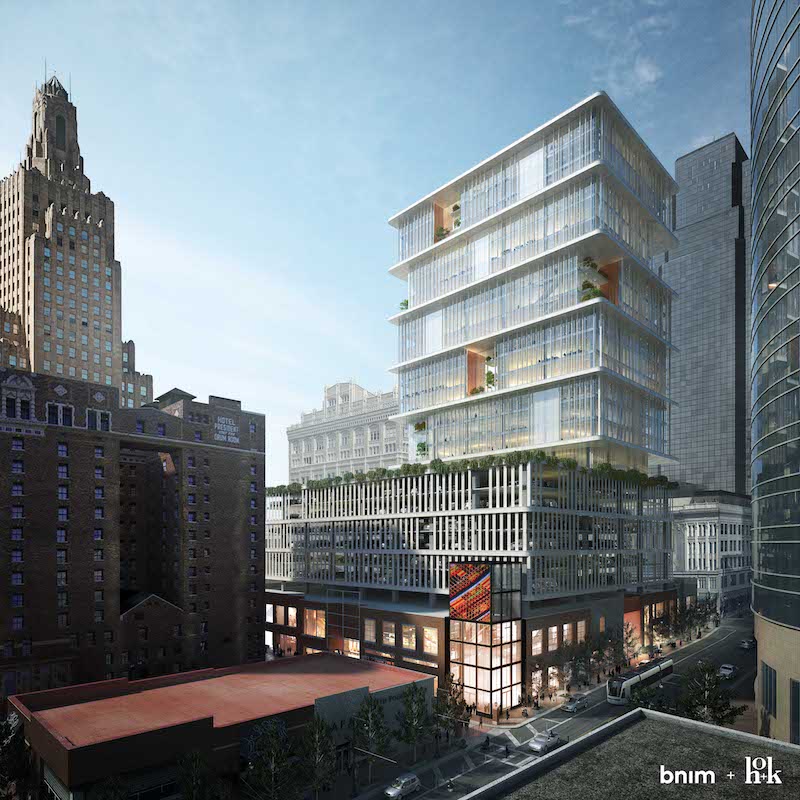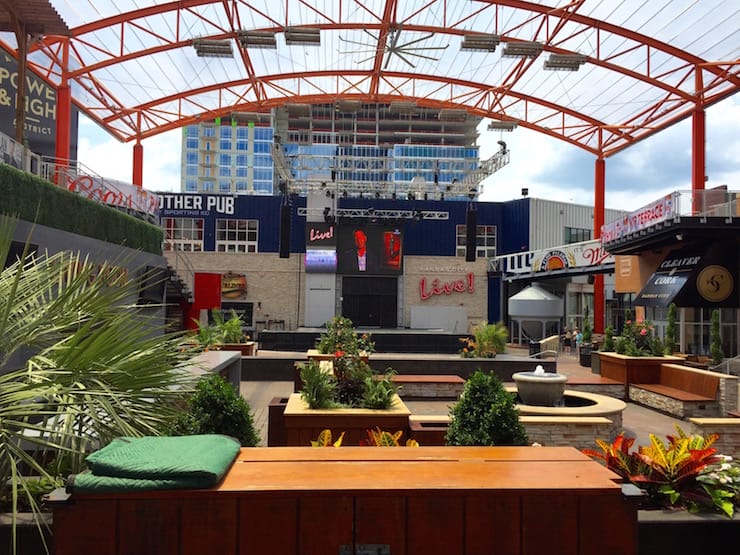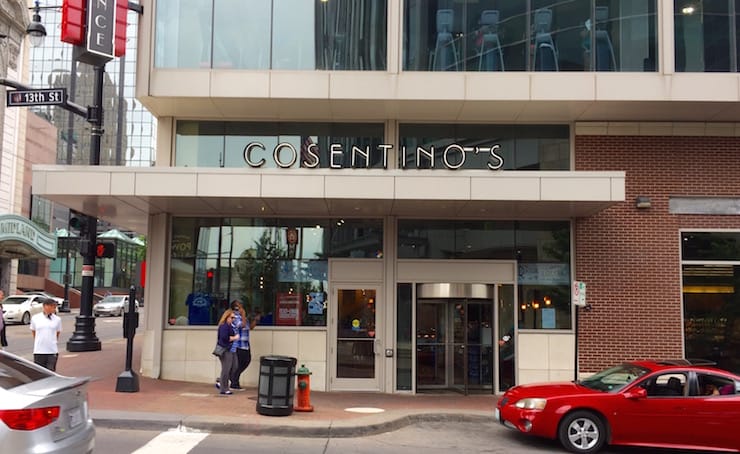Mayoral Candidates Talk Downtown at Neighborhood Forum

Published February 22nd, 2019 at 1:15 PM
By Kevin Collison
If there’s one thing voters learned this week at a mayoral candidate forum sponsored by the Downtown Neighborhood Association, Councilman Quinton Lucas is one hard-riding scooter jockey.
“I ride the scooters from downtown to Arrowhead Stadium and Kauffman, I’ve done it a number of times so I’m a scooter fan,” Lucas told the audience of about 150 at the Downtown Central Library.
He also responded to moderator Mike Mahoney of KMBC-TV “I felt safe that entire (eight-mile) ride until I got to the stadium itself.
“That’s because the stadiums are made almost only for vehicular traffic. In almost every part of Kansas City, downtown and the East Side, it was actually very easy to ride the scooter out there.”
Lucas did note the city could do a better job preventing parked scooters from obstructing sidewalks.
That electric scooters coming to Kansas City last summer was a good thing was one of the few topics all eight candidates attending the forum agreed upon.
They were Lucas and his Council colleagues Jolie Justus, Scott Taylor, Jermaine Reed, Scott Wagner and Alissia Canady, and attorney Steve Miller and businessman Phil Glynn.
Candidates were asked about the homeless situation downtown, noise complaints by residents and how hard should the city continue to push downtown redevelopment and attract new jobs.
The bigger supporters of staying the current redevelopment course appeared to be Taylor, Wagner, Justus and Miller, with Reed and Lucas in the middle, and Glynn and Canady cooler to the idea.

City tax incentives would help finance the proposed 25-story Strata office project west of the H&R Block building, part of an effort to attract new jobs downtown. (Image from BNIM and HOK)
Miller said the city shouldn’t repeat the abrupt policy change that occurred when former Mayor Kay Barnes, a champion of downtown revitalization, was replaced by former Mayor Mark Funkhouser, a critic of the tax incentives used to fuel the revival.
“What corporations want is predictability and they want to understand what the long term vision is for the city,” Miller said.
“They’re going to wonder about this race, whether the next mayor is going to fuel a continued growth of downtown or what happened after Kay Barnes when it came to a stop.”
Justus said the city’s top priority should be landing more jobs downtown.
“One of the things we can do is throw a cap over the North Loop and there’d be a lot of space to attract a huge campus,” she said.
“We need more amenities, we need better transit and we need to make sure we’re creating an environment where we are intentionally creating those jobs.”
But Glynn, who was dumped from the Tax Increment Financing Commission by Mayor Sly James in 2015 for opposing incentives for several projects, said the city has placed too much emphasis on building buildings.
“Economic development isn’t about investing in buildings,” Glynn said. “It’s about investing in people.
“The problem with economic development in Kansas City today and the barriers to attracting a major employer to downtown or anyplace is the gap between the skills our workers have and the skills these large employers demand.”
In response to a question whether enough had been done for downtown and it’s time to move on, Canady praised the Barnes’ legacy but said it was other parts of the city’s turn now.
“There are other areas that are just as blighted, desolate and ignored as downtown was 20 years ago and we need to move forward in that manner.
“I’m not saying abandon downtown but we’ve sparked the investment, the catalyst is there and development wants to come.”

The Kansas City Live! block in the Power & Light District was part of major redevelopment push by the city during the first decade of the new century.
Wagner responded the city needed to continue pushing downtown revitalization as well as other areas.
“If you think you’re finished than you’ll begin to fall behind,” he said.
“The real question is can you do downtown development, Northland development, East Side development, West Side development, Southland development at the same time?
“The trick is you have to find people willing to do that investment. All the city can do is give you the tools to say we will help you here…What it boils down to, how can we identify more people who are willing to make that investment.”
On bread and butter issues for downtown residents like noisy neighbors and where to shop for day-to-day household items, the candidates offered a variety of ideas.
“(We can) encourage retail to come in by talking to them when they’re thinking about it,” Taylor said. “I know there’s a great opportunity with a store like a Target downtown just like there was with a Cosentino’s 20 years ago.”
Glynn said rather than focus on providing tax incentives to encourage retail, the city should be an easier place to do business.
“It takes too long to get loan permits, it takes too long to get approvals,” he said.
“We need to bring a customer service-oriented approach to providing all kinds of service at City Hall, development approvals included.”

Downtown residents want more shopping opportunities similar to the Cosentino’s market developed as part of the Power & Light District.
As for noise, much of the criticism focused on late night trash removal.
Reed noted private trash haulers serve many of downtown’s office buildings.
“We have to figure out ways to make sure we’re treated like an actual community and not like some business park…We as a city have to ensure we are being intentional and hearing from you about ways that we address that.”
Justus, whose district includes downtown, said noise was a big issue with constituents, observing people deserved to be able to sleep.
“We need to have an ordinance adopted that says how can we treat downtown and make it more of a livable neighborhood,” Lucas said.
Justus said the city has some rules in place, but is not enforcing them.
She asked the audience to help craft new regulations: “That make this a multi-use area where we can both live and take care of business.
“The idea that somehow we want to make it quiet during the day when the workers are here but we don’t care about the folks who live here makes no sense.”
Wagner however, pointed out downtown is a different environment than most residential neighborhoods.
“In my neighborhood, I don’t have an employment center, I don’t have restaurants and other entertainment venues, but you do, that’s different. It’s hard.
“At the end of the day, people have to decide do we want to live around that activity? Because if you don’t, this problem is going to persist.”


